Artworks fit for kings make their North American debut at the Asian Art Museum of San Francisco
Meat-shaped stone. Qing dynasty (1644–1911). Stone: jasper; stand: gold. National Palace Museum, Taipei, Guza 000178 Lü-413. Photograph © National Palace Museum, Taipei.
SAN FRANCISCO, CA.- The centerpiece of the Asian Art Museum’s 50th anniversary year, Emperors’ Treasures : Chinese Art f rom the National Palace Museum, Taipei , presents nearly 150 imperial masterworks, many of which are making their North American debut. Visitors will discover a trove of exquisite paintings, ceramics, jades and more from one of the world’s greatest collections of Chinese art.
On view June 17–Sept. 18, 2016, Emperors’ Treasures offers audiences a chance to behold the prized possessions of eight emperors and an empress, passed from dynasty to dynasty and once sheltered in Beijing’s Forbidden City. A glimpse into the artistic life inside an imperial palace, the exhibition showcases how family collections were refined over generations, showcasing rare pieces created by emperors themselves in private moments of inspiration.
Headdress for a court lady (dianzi). Qing dynasty (1644–1911). Jade, tourmaline, pears, pearls, lapis lazuli, and fabric.National Palace Museum, Taipei, Guza 005974 Jin-74-46. Photograph © National Palace Museum, Taipei.
“This is the absolute ‘best of the best’ of Chinese imperial art,” says Jay Xu, director of the Asian Art Museum. “By exploring how artistic taste was cultivated and evaluated — which created standards of beauty and elegance across Chinese culture — the exhibition reflects the museum’s mission of connecting audiences today with the great arts and traditions of Asia.”
The meticulously crafted public identities and carefully guarded private lives of each ruler will be told in a story narrated by the artworks of their eras, from the dignified Song to the bold yet subtle Yuan, from the celebrated brilliance of the Ming to the last days of the dazzling Qing dynasty. “Gazing upon rulers’ treasure troves, we get a sense not only of how their tastes influenced the creative endeavors of their time, but also how they wielded art as a tool to shape history,” Xu explains.
Hairpin ornament in the form of auspicious symbols, 1805. Qing dynasty (1644-1911), reign of Emperor Jiaqing (1796-1820). Gilded silver, gold filigree, coral, kingfisher feather, pearls, and other semiprecious stones. Photograph © National Palace Museum, Taipei.
Objects never before seen in the U.S. make their debut, offer fresh perspectives
While the National Palace Museum, Taipei, is renowned among Chinese art enthusiasts, historically its collection has not been widely accessible to the American public. Displays have traveled to the U.S. only a handful of times: in the 1960s and again in 1995–1996 for an exhibition presented by both the Metropolitan Museum of Art in New York and the Asian Art Museum — an exhibition that Xu also participated in organizing during his time as a junior research fellow there.
“It’s exactly 20 years later,” Xu notes. “However, there are many works that haven’t been seen outside Asia before. In terms of the objects and time periods, it’s a fresh perspective for American audiences since the imperial court surrounded itself with the most important, avant-garde works of its time.”
Glass vase with design of peony blossoms, by The Imperial Workshop, Beijing. Qing dynasty, reign of Emperor Kangxi (1662–1722). Glass painted with enamel. National Palace Museum, Taipei, Guci 017588 Lie-360-73. Photograph © National Palace Museum, Taipei.
Organized around the lives of nine rulers — eight emperors and one empress who reigned from the early 12th through the early 20th centuries — the exhibition will explore how taste and connoisseurship as both personal virtues and statements of political power evolved over 800 years.
By examining the distinct contributions of each subject, the rich styles and the variety of craftsmanship they prized, the exhibition outlines how Chinese art developed and flourished under Han Chinese, Mongol and later Manchu regimes. Through this exceptional selection of objects, Emperors’ Treasures presents a unique occasion for audiences to connect with powerful historical figures through their most cherished belongings, relating to them on an intimate, human scale that only art can express.
Jade belt plaque with dragon design, approx. 1300-1400. Yuan (1206-1368) or Ming dynasty (1368-1644). Nephrite, with wood stand made in the Qing dynasty (1644-1911). Photograph © National Palace Museum, Taipei.
Exhibition highlights shifts in imperial tastes, global inspiration
Emperors’ Treasures unfolds chronologically, allowing audiences to gauge how imperial tastes evolved from within China or due to external pressures, looking backward to ancient examples or blazing forward with new ideas.
The exhibition flows through four galleries on the museum’s first floor. Opening in the large Osher Gallery, audiences are introduced to the Song emperors (960–1279), celebrated for leading a renaissance in Chinese art more than 800 years ago. Here, visitors will discover the masterful landscapes and calligraphy of Emperor Huizong, recognized for his distinctive, influential “slender-gold” script.
Belt ornament set with design of dragons, fish, and flowers. Ming dynasty (1368–1644). Nephrite. National Palace Museum, Taipei, Guyu 003477-003496 Tian-1228. Photograph © National Palace Museum, Taipei.
Alongside these elegant works are the robust art pieces and an imposing portrait demanded by the mighty Yuan-dynasty (1271–1368) ruler Kublai Khan. Also in this gallery are legendary Ming porcelains (1368–1644), the pinnacle of ceramic art in China. Highlights include a rare cloisonné vessel; one of only two surviving blue-andwhite Ming vases depicting West Asian entertainers; and the “holy grail” of Chinese porcelains — a wine cup with a cock and hen design like the example recently sold at Sotheby’s for more than $36 million.
The adjacent Hambrecht Gallery features an overview of illustrious Qing-dynasty accomplishments (1644–1911). During this period, a dozen imperial workshops across the Chinese Empire were opened to fulfill the Forbidden City’s relentless appetite for lacquers, enamels and carved jade, like the paper-thin hibiscus-shaped bowl from the early 1700s, sculpted from a single piece of glowing, nut-brown agate.
Flower vase. Ming dynasty (1368–1644). Copper alloy with cloisonné enamel inlays. National Palace Museum, Taipei, Gufa 000761 Lü 1847-38. Photograph © National Palace Museum, Taipei.
Next door is the Lee Gallery, which paints an intimate portrait of the 18th-century Qianlong Emperor, known as the “Old Man of Ten Perfections” and admired as the most prolific poet-monarch in Chinese history. Through a selection of paintings, carvings and other treasures, audiences will see how a single ruler caused a seismic shift in the creative output of China.
While many of the masterworks remain quietly breathtaking in their elegance, others certainly call out to the interests of today. The White Falcon hanging scroll by Italian Jesuit Giuseppe Castiglione introduces visitors to an intriguing European figure who spent decades in the Qing court, serving under Emperors Kangxi, Yongzheng, and Qianlong. Having his Chinese name as Lang Shining, Castiglione’s collaboration on court portraits and paintings underscores a tradition of East-West cultural exchange that continues in the current globalized art arena.
The exhibition concludes in the museum’s Resource Room with a focus on the Empress Dowager Cixi, a Manchu concubine who rose to become the long-ruling power behind the final Qing emperors. Cixi recruited female artists to her “Studio of Great Elegance,” where, under her personal direction, the coterie combined traditional symbols and patterns with botanical study, setting a foundation for modern Chinese aesthetics.
Vase with a scene of a flower-and-rock garden, by the Imperial Workshop, Beijing. Qing dynasty, reign of Emperor Kangxi (1662-1722). Copper alloy painted with enamel. Photograph © National Palace Museum, Taipei.
Imperial treat, the “Meat-shaped stone” stars in sumptuous summer programs
An icon of the National Palace Museum, Taipei, the celebrated Qing-dynasty “Meatshaped stone” will also be traveling to the U.S. for the first time. The stone — a hunk of jasper carved and dyed to resemble a portion of braised pork belly fresh from the pot — exemplifies how the enduring appeal of traditional Chinese cooking has long inspired devotion. When on view in Japan in 2014, the stone was seen by an average of 6,000 people a day and generated a mini-boom in dongpo rou , the classic dish it closely resembles.
In honor of the stone’s unusual appeal, a special edition of the Asian Art Museum’s popular Thursday evening programs will feature innovative new dishes inspired by the Meat-shaped stone and prepared by four local chefs. Their dishes — from street carts to haute cuisine — will be presented to the public on July 7.
Ritual dou vessel with phoenix-shaped handles, by the Imperial Workshop, Beijing. Qing dynasty, reign of Emperor Yongzheng (1723–1735). Copper alloy with cloisonné enamel inlays. National Palace Museum, Taipei, Gufa 000116 Lie 427–16. Photograph © National Palace Museum, Taipei.
Additionally, from June 17–July 18, more than a dozen San Francisco chefs, both upand-coming and established, will feature versions of the mouthwatering, slowsimmered “priceless pork belly” in their restaurants. Details on participating hotspots to be announced in May. Another take on the delicious dish developed by Melinda Quirino, chef at the museum’s own Cafe Asia, will be available for visitors to enjoy throughout the exhibition’s run.
“Emperors’ Treasures is about looking forward and starting the museum’s next 50 years on the right note,” says Xu. “We not only share and present exceptional works of art, but we help people understand their context, significance and relevance.”
Vessel in the shape of a mythical beast (xizun ), by the Imperial Workshop, Beijing. Qing dynasty, reign of Emperor Qianlong (1736-1795). Copper alloy with cloisonné enamel inlays. Photograph © National Palace Museum, Taipei.
Vase with flower designs. Ming dynasty (1368-1644), reign of Emperor Yongle (1403–1424. Carved red lacquer (tihong).National Palace Museum, Taipei, Guqi 000468 Que-395-2. Photograph © National Palace Museum, Taipei.
Hibiscus-shaped bowl, by the Imperial Workshop, Beijing. Qing dynasty, reign of Emperor Yongzheng (1723–1735). Agate.National Palace Museum, Taipei, Guza 000108 Tian-168-16. Photograph © National Palace Museum, Taipei.
Vase carved with Emperor Qianlong’s poem on the base. Official Ru kiln, Henan province, Northern Song dynasty (960–1127). High–fired ceramic with celadon glaze. National Palace Museum, Taipei, Guci 017856 Kun-223-5. Photograph © National Palace Museum, Taipei.
Pillow in the shape of a recumbent boy. Ding kiln, Hebel province, Northern Song dynasty (960-1127). High-fired ceramic with glaze. Photograph © National Palace Museum, Taipei.
Cup and saucer. Jingdezhen, Jiangxi province, Yuan dynasty (1271–1368). Porcelain with cobalt glaze and gilt decoration.National Palace Museum, Taipei, Guci 017371 Tian-1146-1, Guci 017370 Tian-1146. Photograph © National Palace Museum, Taipei.
Vase with West Asian entertainers. Jingdezhen, Jiangxi province, Ming dynasty, reign of Emperor Yongle (1403–1424). Porcelain with underglaze cobalt decoration. National Palace Museum, Taipei, Guci 012549 Que-441. Photograph © National Palace Museum, Taipei.
Ewer in the shape of a monk’s cap with poem by Emperor Qianlong carved on the bottom. Jingdezhen, Jiangxi province, Ming dynasty, reign of Emperor Xuande (1426–1435). Porcelain with red glaze. National Palace Museum, Taipei, Guci 017764 Lü-1804-30. Photograph © National Palace Museum, Taipei.
Cup with chicken design. Jingdezhen, Jiangxi province, Ming dynasty, reign of Emperor Chenghua (1465–1487). Porcelain with underglaze and overglaze multicolor decoration. National Palace Museum, Taipei, Guci 005189 Cang-164-19-1. Photograph © National Palace Museum, Taipei.
Bowl with design of cranes and long-tailed birds amid camellias and rocks. Glazed bowl made in Jingdezhen, Jiangxi province; decoration by the Imperial Workshop, Beijing, Qing dynasty (1644–1911), reign of Emperor Yongzheng (1723–1735). Porcelain with overglaze multicolor enamel. National Palace Museum, Taipei, Guci 017543 Lie 226. Photograph © National Palace Museum, Taipei.
Bowl with red-billed blue magpies in a bamboo-end-rock garden. Glazed bowl made in Jingdezhen, Jiangxi province;decorated by the Imperial Workshop, Beijing, Qing dynasty, reign of Emperor Yongzheng (1723-1735). Porcelain with overglaze multicolor enamel. Photograph © National Palace Museum, Taipei.
Vase with revolving core and eight-trigram design, approx. 1744. Jingdezhen, Jiangxi province, Qing dynasty, reign of Emperor Qianlong (1736–1795). Porcelain with golden glaze, multicolor decoration, and appliqué sculpture. National Palace Museum, Taipei, Guci 017214 Lie-408. Photograph © National Palace Museum, Taipei.
Spittoon with floral décor. Jingdezhen, Jiangxi province, Qing dynasty (1644-1911), reign of Emperor Guangxu (1875-1908). Porcelain with overglaze polychrome decoration. Photograph © National Palace Museum, Taipei.
Snow over mountains and streams at dusk, approx. 1100–50. Song dynasty (960–1279). Hanging scroll, ink on silk.National Palace Museum, Taipei, Guhua 000143. Photograph © National Palace Museum, Taipei
Walking on a path in spring, by Ma Yuan (active approx. 1160–after 1225), calligraphy attributed to Zhao Kuo (Emperor Ningzong, 1168–1224). Southern Song dynasty, reign of Emperor Ningzong (1195–1224). Album leaf, ink and color on silk.National Palace Museum, Taipei, Guhua 001289-13. Photograph © National Palace Museum, Taipei.
Half portrait of Empress Wu. Southern Song dynasty (1127-1279). Album leaf, ink and color on silk. Photograph © National Palace Museum, Taipei.
Half-portrait of Emperor Gaozong, Zhao Gou. Southern Song dynasty (1127-1279). Album leaf, ink end color on silk. Photograph © National Palace Museum, Taipei.
Goddess Magu (Hemp Maiden). Yuan dynasty (1271–1368). Hanging scroll, ink and colors on silk. National Palace Museum, Taipei, Guhua 002064. Photograph © National Palace Museum, Taipei.
Thatched House on the East Mountain, 1343, by Wang Meng (1308-1 385). Yuan dynasty (1206-1368). Hanging scroll, ink and light color on paper. Photograph © National Palace Museum, Taipei.
The Eulogy of the 011m (Chinese unicorn), an Auspicious Omen, approx. 1414. Ming dynasty (1368-1644). Hanging scroll, ink end color on silk. Photograph © National Palace Museum, Taipei.
Cats in a flower-and-rock garden, 1426, by Zhu Zhanji (Emperor Xuande, 1398–1435). Ming dynasty, reign of Emperor Xuande (1425–1435). Hanging scroll, ink and color on paper. National Palace Museum, Taipei, Guhua 000421. Photograph © National Palace Museum, Taipei.
Mountain villa and lofty retreat, attributed to Li Zai (died 1431). Ming dynasty (1368-1644). Hanging scroll, ink on silk. Photograph © National Palace Museum, Taipei.
Peaks emerging from spring clouds, by Wang Yuanqi (1642-1715). Qing dynasty, reign of Emperor Kangxi (1662-1 722). Hanging scroll, ink and color on silk.
Illustrations of farming and weaving, approx. 1696, by Leng Mei (1662–after 1742). Qing dynasty (1644–1911), reign of Emperor Kangxi (1662–1722). Album leaves, colors on silk. National Palace Museum, Taipei, Guhua 003383. Photograph © National Palace Museum, Taipei.
Beijing Observatory (Observatoire de Peking), 1736, by Jean-Baptiste Du Halde (France, 1674–1743). Qing dynasty (1644–1911), reign of Emperor Yongzheng (1723–35). Etching and engraving on paper. National Palace Museum, Taipei, Zengtu 000032. Photograph © National Palace Museum, Taipei.
Three sheep (yang) bring peacefulness, 1772, by Hongli (Emperor Qianlong, 1711-1799). Qing dynasty, reign of Emperor Qianlong (1736-1795). Hanging scroll, ink and color on paper. Photograph © National Palace Museum, Taipei.
White Falcon, by Lang Shining (Giuseppe Castiglione; Italian, 1688–1766). Qing dynasty, reign of Emperor Qianlong (1736–1795). Hanging scroll, color on silk. National Palace Museum, Taipei, Guhua 000958. Photograph © National Palace Museum, Taipei.
Grotesque Stones in the slender-gold style, by Zhao Ji (Emperor Huizong, 1082–1135). Northern Song dynasty (960–1127), reign of Emperor Huizong (1100–1125). Album leaf, ink on paper. National Palace Museum, Taipei, Gushu, 000242-2. Photograph © National Palace Museum, Taipei.
Letter to Yan Xiu in running script, by Zhu Xi (1130-1200). Southern Song dynasty (1127-1279). Album leaf, ink on paper. Photograph © National Palace Museum, Taipei.
Calligraphic works, by Zhao Mengfu (1254–1322) and Xianyu Shu (1257–1302). Yuan dynasty (1271–1368). Album leaves, eight pages, ink on paper. National Palace Museum, Taipei, Gushu 000252-0. Photograph © National Palace Museum, Taipei
lnkstone featuring phoenix decoration and fish-fossil inlay with fitted case, by the Imperial Workshop, Beijing. Qing dynasty, reign of Emperor Kangxi (1662-1722). Songhua stone, fish fossil, and clear glass. Photograph © National Palace Museum, Taipei.
Nine goats bring peace to the New Year. Qing dynasty, reign of Emperor Qianlong (1736-1795). Tapestry (kesi) with embroidery. Photograph © National Palace Museum, Taipei.

/https%3A%2F%2Fprofilepics.canalblog.com%2Fprofilepics%2F1%2F0%2F100183.jpg)
/https%3A%2F%2Fstorage.canalblog.com%2F03%2F02%2F119589%2F96711876_o.jpg)
/https%3A%2F%2Fstorage.canalblog.com%2F11%2F31%2F119589%2F94773502_o.jpg)
/https%3A%2F%2Fstorage.canalblog.com%2F20%2F83%2F119589%2F94772815_o.jpg)
/https%3A%2F%2Fstorage.canalblog.com%2F26%2F72%2F119589%2F75604929_o.jpg)
/https%3A%2F%2Fstorage.canalblog.com%2F59%2F60%2F119589%2F26458628_o.jpg)

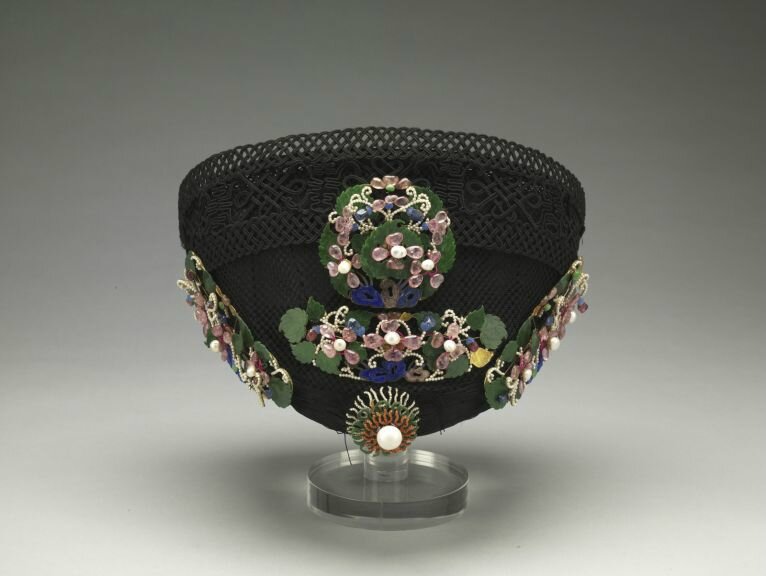







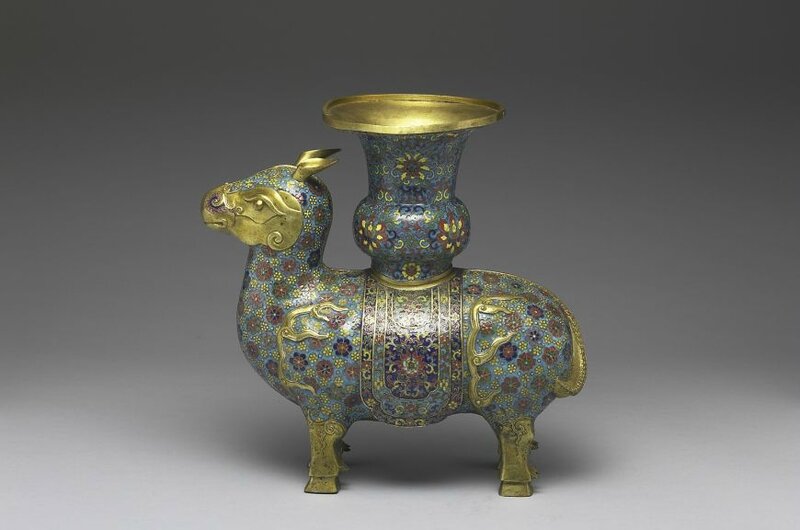




















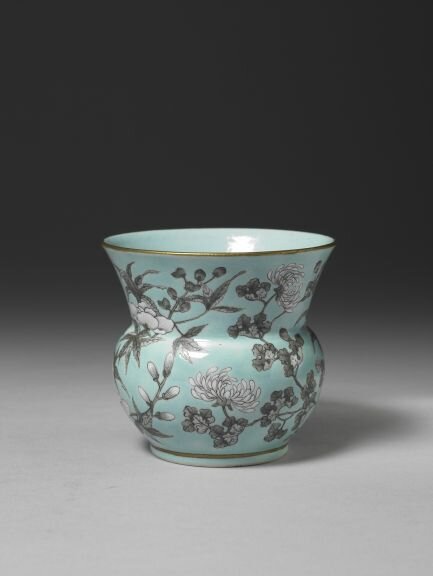

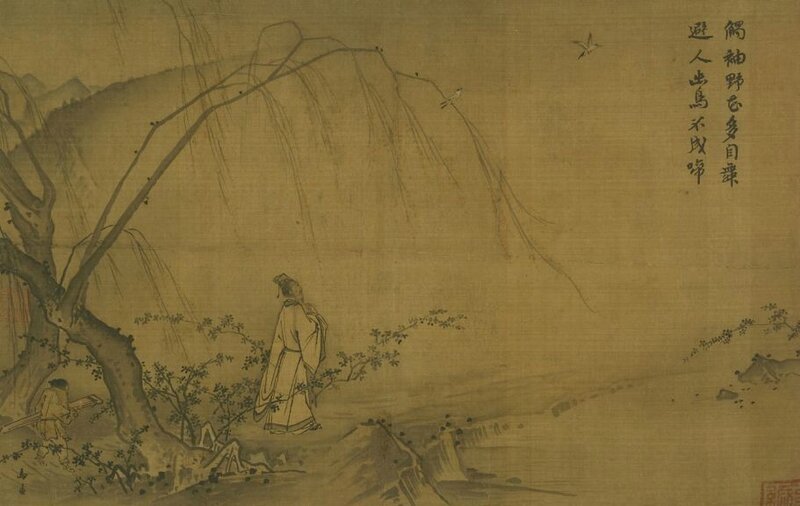
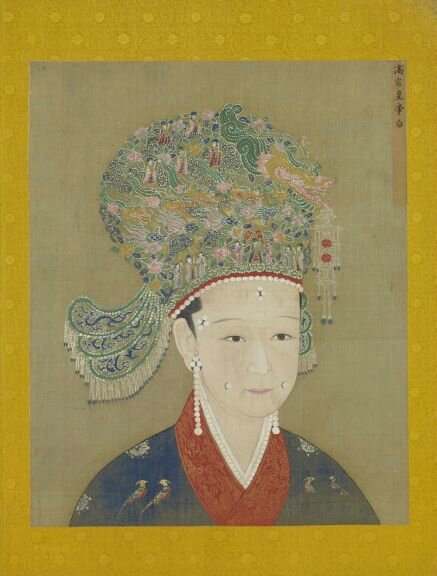
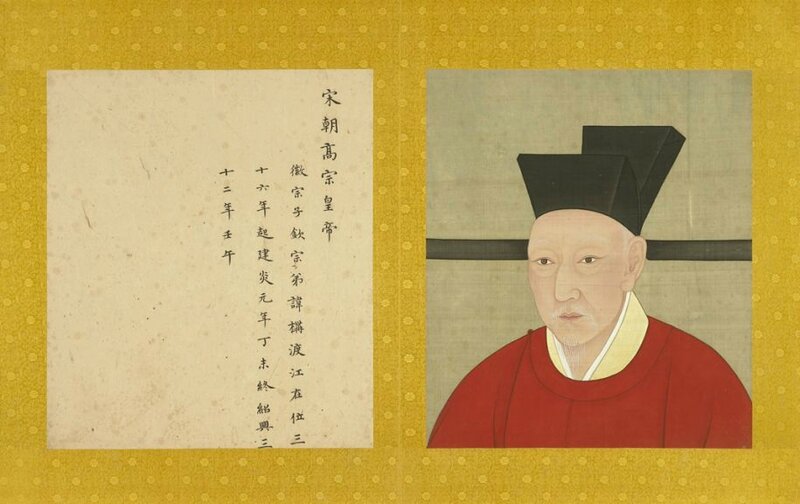


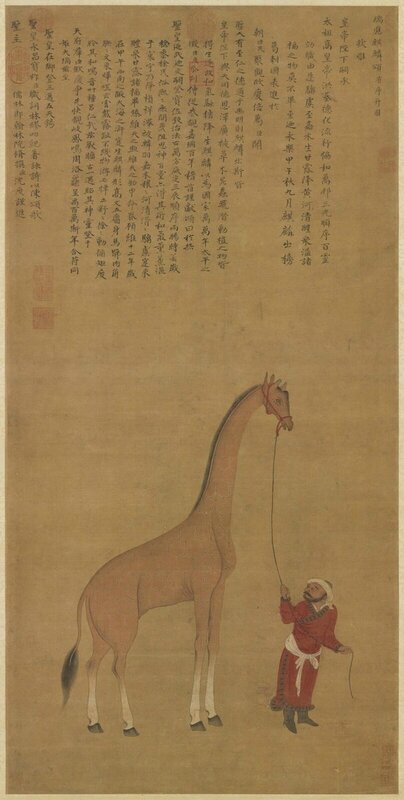














/http%3A%2F%2Fstorage.canalblog.com%2F86%2F01%2F119589%2F96724973_o.jpg)
/http%3A%2F%2Fstorage.canalblog.com%2F12%2F17%2F119589%2F96535400_o.jpg)
/http%3A%2F%2Fstorage.canalblog.com%2F64%2F48%2F119589%2F94407810_o.jpg)
/http%3A%2F%2Fstorage.canalblog.com%2F42%2F28%2F119589%2F91384749_o.jpg)